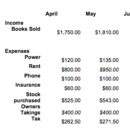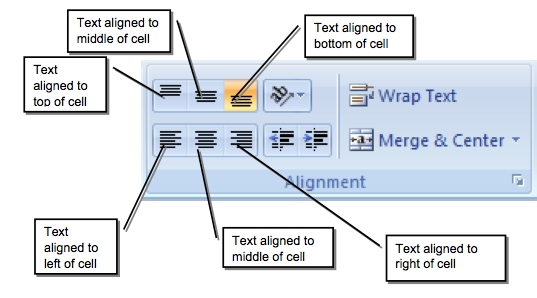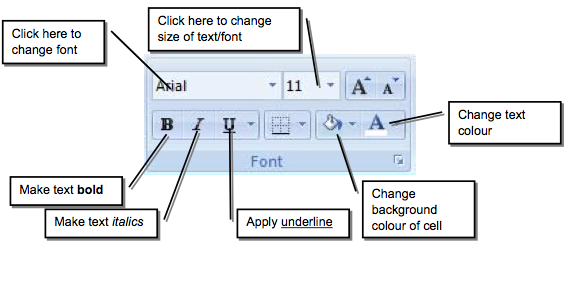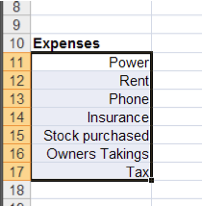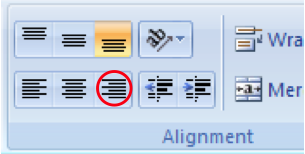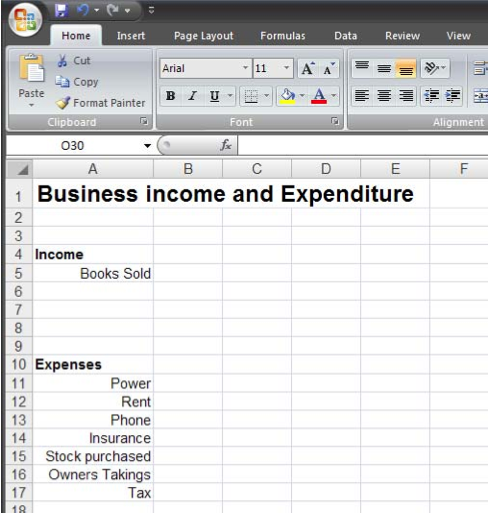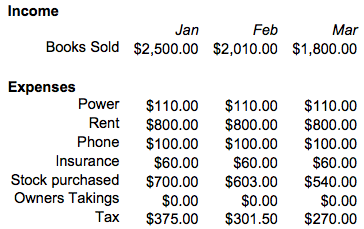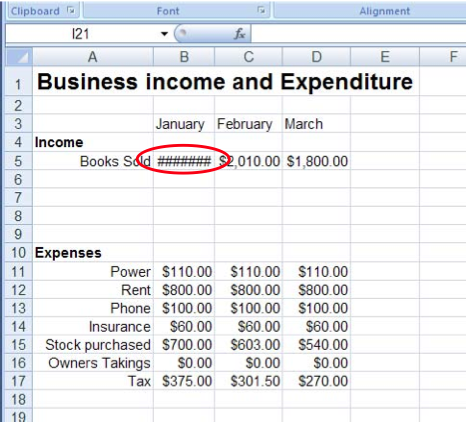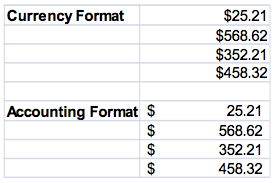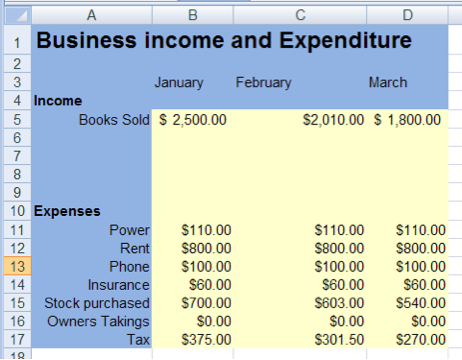Working with spreadsheets/Spreadsheet design/Formatting data
| Working with spreadsheets | |
|---|---|
| Spreadsheet design | Introduction | Planning a spreadsheet | Working with columns and rows | Formatting data | Key points | Assessment |
Contents
Alignment
To align text in a cell:
- Click the cell you want to work with
- Click on one or more of the following in the Alignment Group:
Text Formatting
Select the cell you want to format, then from the Font Group:
Let's look at entering some more data into our spreadsheet, and the effect it has on formatting:
Mr Mann has been running his bookshop for 3 months now. He’s got some figures for you to enter into the spreadsheet that you are creating for him:
We have highlighted a problem that occurs sometimes – If your column is not wide enough Excel may not display the whole of a number. It displays a series of hash marks “###” instead. If this is the case, widen the column and you should see the whole of the number appear.
|
As you entered the prices into Excel, you may have added the dollar sign in front.
If you did, then Excel will automatically pick up that you mean “this value is currency”. If you didn't, we will need to format the cells in our sheet.
If you have used Microsoft Word, then you know that formatting text does not change the text, it just changes the appearance of the text. Formatting in Excel does the same thing - let's look at some further formatting options.
|
We actually have a full range of formatting available to us. Just above the currency button that we just used ($) is a field showing what format is in use: the default is General. Click on the drop-down arrow next to this to see other formatting options available.
Some simpler formatting options you might find useful are:
- General vs Text
- Both of these options “do nothing” to your data. However text allows you to have a leading zero on a number. For instance, if you wanted to store the following phone number in Excel: 021 4568 7896 the general option would display 21 4568 7896
- Number
- Allows you to display and format numbers. You can use the increase and decrease decimals buttons to alter the number of decimal places displayed.
- Currency
- Format your data as currency.
- Short and Long Dates
- Formats your data as a date. Short format is 3/12/2011 or 3/12/11. Long format is Saturday, 3 December 2011.
- Percentages
- Tells Excel to treat your data as a percentage.
|
Please note: the following link will open in a new window/tab. When you have finished, simply close the window/tab and you'll return to this page.
Don't forget to check out the video on page 2.
|

